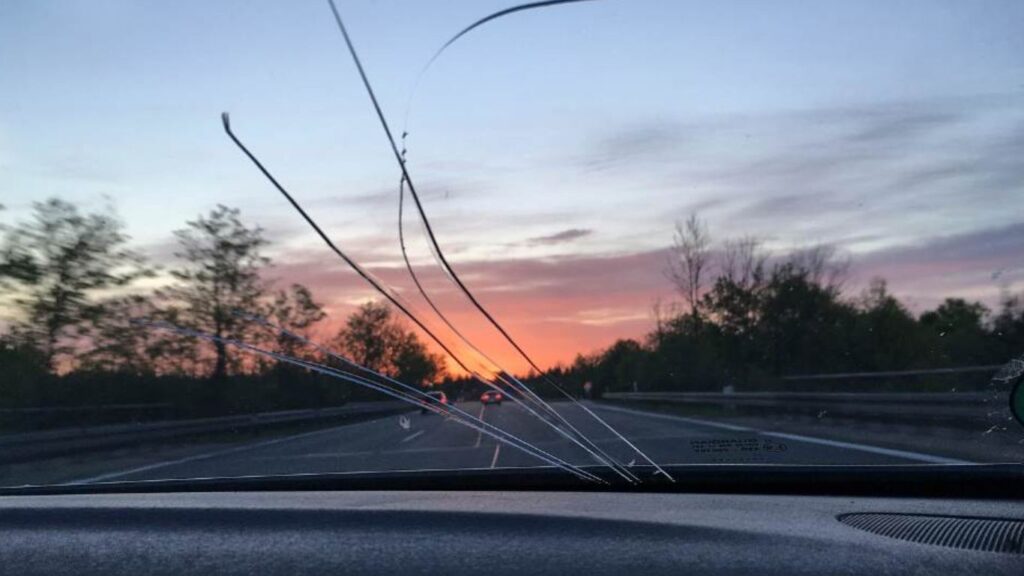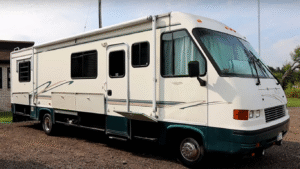It’s a typical summer afternoon in Phoenix, the kind where stepping into your car feels like opening an oven. You parked under the sun, no sign of damage when you left it. But now? There’s a thin crack stretching across the windshield. No rock hit it. No branch fell. Just… heat.
Sounds wild, right? But this is a real thing, especially here in the Valley. When your car sits out in 110°F heat, the glass can expand unevenly, and if there’s even a tiny chip hiding in your windshield, boom, that’s all it takes to trigger a crack.
In this blog, we’re diving into the truth behind heat-damaged windshields, why it happens, when you’re most at risk, and what you can do about it. Whether you’re cruising down I-10 or just parked at your favorite taco spot, it pays to know what’s putting stress on your glass.
Because in Phoenix, the sun doesn’t just tan your skin, it can split your windshield too.
Yes, Heat Can Crack Your Windshield, Here’s Why
Let’s clear up the myth first: heat alone doesn’t “explode” a windshield like you see in movies. But combine that heat with uneven temperatures, hidden chips, and a little bad luck, and you’ve got the perfect recipe for a stress crack.
1. Thermal Stress: The Real Culprit
When your car sits under the Phoenix sun, the glass heats up, but not evenly. The edges, especially those with black trim or tinted areas, tend to absorb more heat than the center. This uneven expansion causes internal tension. And glass, by nature, doesn’t like tension.
Now, imagine turning on your air conditioning full blast or throwing cold water on the windshield. That sudden drop in temperature causes the hot glass to contract fast, and that’s where it snaps. This effect is called thermal shock, and it’s a common reason cracks appear out of nowhere.
2. Pre-Existing Chips Become Weak Spots
You might not even notice it, but a tiny chip from a past rock hit can become a major problem in extreme heat. When glass expands, that weak point can’t handle the stress and starts to spread, often overnight or while parked.
Think of it like a crack in dry earth, small at first, but when pressure builds, it splinters. That’s exactly what happens with microfractures in auto glass.
3. The Type of Glass Matters
Most windshields are made from laminated safety glass, two layers of glass bonded with a plastic interlayer. This design improves safety, but it also reacts differently to heat than tempered glass (used on side and rear windows). Over time, repeated heating and cooling cycles can weaken the bond between layers, especially around the edges, increasing the chance of delamination or cracking.
4. It’s Not Just Theory, It’s Backed by Data
Auto glass repair shops in hot-weather regions like Phoenix report that 10–15% of summer windshield replacements are due to thermal stress, and most of these cracks start without any visible impact.
That means people are walking back to their cars just like you, wondering how their glass cracked while the car was parked.
Signs That Heat May Have Caused the Crack
When your windshield suddenly shows a crack but you can’t remember any impact, heat is often the silent culprit. Knowing how to spot heat-related cracks early can save you from costly replacements and keep you safe on the road.
Here’s what to look for:
1. Cracks That Appear Suddenly Without Any Impact
Unlike chips caused by flying rocks, heat-induced cracks often show up out of nowhere. You might park your car, walk away, and when you return, there’s a thin crack. No dents or chips on the road, no debris hitting your windshield, just stress from heat expansion and contraction.
2. Cracks Starting at the Edge and Spreading Inward
Heat tends to stress the edges of your windshield more than the centre because the metal frame expands faster than the glass. This uneven heating causes cracks to start at the perimeter and grow inward, sometimes reaching lengths of 25 to 30 centimetres or more. These edge cracks are especially dangerous because they weaken the seal between glass and car frame.
3. Hairline or “Spider Web” Fractures
Thermal stress often creates fine, hairline cracks that look like spider webs or tiny fissures spreading from a central point. These aren’t jagged or deep impact cracks but smooth, slightly curved lines that gradually grow with repeated temperature cycles.
4. Vertical or Slightly Curved Cracks
Heat stress cracks usually don’t branch off sharply like impact cracks. Instead, they often follow a vertical or gently curved path, a signature pattern caused by how glass expands and contracts under heat.
5. Cracks Developing After Rapid Temperature Changes
If you notice cracks appearing after blasting your A/C on a hot windshield or washing your car with cold water under the scorching sun, that’s a classic sign of thermal shock. The rapid cooling causes glass contraction faster than it can handle, leading to fractures.
6. Multiple Small Cracks or Chips That Multiply Over Time
Heat doesn’t just cause new cracks, it worsens existing minor chips. You may see several small cracks forming close together or small chips getting deeper and spreading. This progressive damage often starts invisible and only becomes clear over days or weeks.
Why These Signs Matter
Identifying heat-related cracks early helps you take swift action. Since these cracks weaken the glass structurally, ignoring them increases the risk of shattering, especially when driving over bumps or under more temperature stress.
If you spot any of these signs, schedule a professional windshield inspection immediately, it’s the best way to prevent further damage and keep your windshield intact.
What to Do If Your Windshield Cracks from Heat
Seeing a crack on your windshield can be frustrating, especially when it seems to come out of nowhere, thanks to Phoenix’s intense heat. But ignoring it won’t make it better. In fact, that tiny crack can quickly turn into a bigger problem.
Here’s what you should do:
1. Don’t Ignore the Crack
Every time you drive over bumps or the temperature swings from hot days to cooler nights, the crack can grow. Vibrations from the road stress the weakened glass, and thermal expansion causes it to spread further. The sooner you address it, the better your chances of saving the windshield without a full replacement.
2. Avoid Sudden Cooling or Washing Immediately
It might be tempting to wash your car or blast the AC right after parking in the sun, but doing this while the glass is still hot can increase stress and worsen the crack. Let your car cool gradually before applying any cold water or cold air.
3. Call a Repair Specialist ASAP
At Phoenix Auto Glass Shop, we understand how sudden windshield cracks can disrupt your day. That’s why we offer mobile auto glass repair services designed for your convenience. Whether you’re at home, work, or anywhere in Phoenix, our expert technicians will come to you.
Using advanced resin-based crack sealing techniques, we quickly seal small cracks to prevent them from spreading, helping to extend the life of your windshield and save you from costly replacements. Trust Phoenix Auto Glass Shop for fast, reliable, and professional service right where you need it.
4. Know When It’s Time for Replacement
If the crack has grown too large, or it’s right in your line of sight, you’ll likely need a windshield replacement in Phoenix. Skilled technicians can also assist with car windshield repair and replacement, and for larger vehicles, services like RV windshield repair and replacement or truck windshield repair and replacement are available. Don’t forget side glass, side window repair and replacement experts can help with heat or impact damage there too.
How to Prevent Heat-Related Windshield Damage
If you’ve experienced a heat-related crack, you’re probably wondering: how can I stop this from happening again? The good news is, a few simple habits can protect your windshield and save you time and money.
Here’s what works, backed by science and everyday experience in hot climates like Phoenix:
1. Use Windshield Sunshades
A sunshade is more than just a convenience, it helps regulate the temperature inside your car by blocking direct sunlight. This reduces how much your windshield heats up, lowering the risk of uneven expansion and stress cracks. Keep one handy and use it whenever you park in the sun.
2. Avoid Sudden Temperature Changes
When your car is blazing hot, don’t blast the air conditioning full throttle immediately. Instead, start with lower settings and gradually cool down the cabin. Sudden cooling causes the glass to contract rapidly, which can trigger cracks, especially if your windshield already has small chips or weaknesses.
3. Park in Shaded or Covered Areas Whenever Possible
A sunshade is more than just a convenience, it helps regulate the temperature inside your car by blocking direct sunlight. This reduces how much your windshield heats up, lowering the risk of uneven expansion and stress cracks. Keep one handy and use it whenever you park in the sun.
4. Repair Chips Early
Even small chips weaken your windshield’s structure and make it more vulnerable to heat damage. Fixing them early prevents cracks from spreading when the glass expands and contracts. At Phoenix Auto Glass Shop, we recommend getting chips repaired as soon as you spot them, it’s a small investment that protects your safety and your wallet.
5. Be Mindful of Washing Your Car
Avoid pouring cold water directly on a hot windshield. Instead, wait until the car cools down to prevent sudden temperature shocks to the glass.
Conclusion
Your windshield does a lot more than just keep bugs and dust out of your car. It’s a critical part of your vehicle’s safety system, helping to protect you in accidents and maintain structural integrity. But even something as tough as auto glass isn’t immune to the harsh realities of Phoenix’s intense heat.
When temperatures soar and the sun beats down relentlessly, the glass expands and contracts repeatedly. Over time, this stress can wear down even the strongest windshields, turning small chips into dangerous cracks. That’s why it’s so important to catch these signs early and understand what’s behind them.
By staying aware of how heat affects your windshield and taking simple preventative steps, you can avoid costly repairs and keep your car safe and sound.





